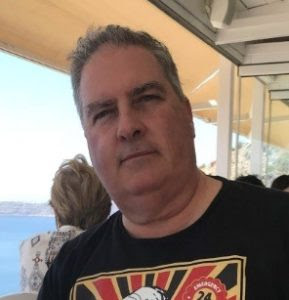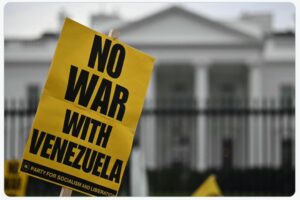07 Other Atrocities, Corruption, Govern
 Sterling Harwood: In Solidarity with Alex Jones – The Final Report on Sandy Hook: A Complete and Total Forensic Failure
Sterling Harwood: In Solidarity with Alex Jones – The Final Report on Sandy Hook: A Complete and Total Forensic FailureMr. President,
Page 1 of the ‘Report of the State’s Attorney for the District of Danbury on the Shootings at Sandy Hook Elementary School and 26 Yogananda Street, Newtown, Connecticut on December 14, 2012” (linked below) includes a disclaimer that it lacks the intent to convey all the facts. But does the Report connect the dots between shooter and shots sufficiently to show – beyond a reasonable doubt – that Adam Lanza was the shooter and the only shooter? The short answer is emphatically, ‘No.’ it establishes neither means nor motive nor opportunity and thereby amounts to a complete and total forensic failure. Here are some of the reasons why.
Page 5 says Adam used a Bushmaster Model XM15-E2S rifle to do all of the shooting, except for shooting himself to death with a Glock 20, 10mm handgun. Page 5 says Adam’s shooting killed 20 children and six adults and non-fatally wounded two adults. So, there ought to be plenty of evidence linking the shooter to the shots, including witness statements from the two surviving adults. But the Report fails to refer to any witness identifying Adam as the shooter and even fails to have a section in the Table of Contents with the word “witness” in it.
Page 2 says the Bushmaster rifle was found in the same room as Adam’s corpse and that all of the 5.56 mm shell casings from the school that were tested were from that rifle. But that claim is contradicted by a crucial footnote on page 37, which states that “No positive identification could be made to any of the bullet evidence submissions noted . . . in 5.56 caliber. The physical condition of the bullet jacket surfaces were severely damaged and corroded. They all lacked individual striated marks of sufficient agreement for identification purposes”:
Pages 2 and 36 admit that all the relevant firearms were legally purchased by Lanza’s mother, Nancy, rather than by Adam. Pages 2 and 36 make no claim about who purchased the ammunition but say the mother had purchased the same type of ammunition in the past. Pages 2 and 36 admit that there is no evidence that Adam purchased any ammunition.
Page 2 claims that Adam used a .22 Caliber Savage Mark II rifle to shoot and kill his mother in her bed at the home where they resided at 36 Yogananda Street in Newtown. But no substantiation is provided to support that conclusion and a photograph that we have of the Nancy Lanza bedroom (which appears as Exhibit 17 of Ch. 7, Nobody Died at Sandy Hook (2015) contradicts that claim.
 While there is some red stuff on the bed, it does not appear to be blood but might be raspberry jam, as Jim Fetzer has suggested. The quantity appears to be insufficient for multiple shots to the head. And, Kelley Watt, who has her own home and commercial cleaning service, noticed that they had left behind a blue moving pad beneath the leg of the bed in their apparent haste to furnish an empty home to serve as the Lanza residence, as Ch. 7 documents with 50 photographs.
While there is some red stuff on the bed, it does not appear to be blood but might be raspberry jam, as Jim Fetzer has suggested. The quantity appears to be insufficient for multiple shots to the head. And, Kelley Watt, who has her own home and commercial cleaning service, noticed that they had left behind a blue moving pad beneath the leg of the bed in their apparent haste to furnish an empty home to serve as the Lanza residence, as Ch. 7 documents with 50 photographs.Regarding Adam’s motive, which page 3 calls the “obvious question,” page 3 admits “there is no clear indication why he did so, or why he targeted Sandy Hook Elementary School.” It even claims that the question of why Adam murdered 20 children and six adults (as well as his mother) “may never be answered conclusively, despite the collection of extensive background information on the shooter through a multitude of interviews and other sources.”
Page 3 maintains that “The evidence clearly shows that the shooter planned his actions …”, but it fails to specify that evidence. Instead, the Report continues by highlighting Adam’s severe mental illness, which surely seems to be a major obstacle to planning a complex series of crimes against a protected target, such as a school with locked doors, fire alarms, phones, security cameras posted in plain sight, and such.
Page 2 admits no evidence suggests anyone helped Adam plan or commit the attack. Page 3 even calls Adam’s attack a “rampage”, but isn’t “a clearly planned rampage” an oxymoron? Page 2 admits that the only firearm allegedly found on his person was not even fired. How does a readily available firearm go unfired during an almost 11-minute rampage?
While the crucial footnote on page 37 says that the Bushmaster “cannot be eliminated” from having fired these rounds, the inability to identify any of the bullets as having been fired from the Bushmaster means that they failed to connect the weapon alleged to have been used with the shooter alleged to have used it to any of the victims or the crime scene itself. As a consequence, this report may qualify as perhaps the most obvious and blatant forensic failure in the annals of criminal investigations.
Very respectfully,
Sterling Harwood, J.D., Ph.D.
Sterling Harwood, J.D., Ph.D.
Reference:
Stephen Sedensky III, Report of the State’s Attorney for the Judicial District of Danbury on the Shootings at Sandy Hook Elementary School and 36 Yogananda Street, Newtown, Connecticut on December 14, 2012 (25 November 2013).
 Sterling Harwood earned his J.D. from Cornell Law School and his Ph.D. in philosophy from Cornell University. Since 1998, he has practiced law in San Jose, California, from which he has now retired. He earned tenure as an Adjunct Philosopher at Evergreen Valley College after teaching at Cornell Law School, Cornell University, Lincoln Law School, San Jose State University and Illinois State University. His books include Crime and Punishment (with Michael J. Gorr, 2000), Business as Ethical and Business as Usual (1996), Judicial Activism (1996), and Controversies in Criminal Law (with Michael J. Gorr, 1992).
Sterling Harwood earned his J.D. from Cornell Law School and his Ph.D. in philosophy from Cornell University. Since 1998, he has practiced law in San Jose, California, from which he has now retired. He earned tenure as an Adjunct Philosopher at Evergreen Valley College after teaching at Cornell Law School, Cornell University, Lincoln Law School, San Jose State University and Illinois State University. His books include Crime and Punishment (with Michael J. Gorr, 2000), Business as Ethical and Business as Usual (1996), Judicial Activism (1996), and Controversies in Criminal Law (with Michael J. Gorr, 1992).DOC (2 Pages): Harwood Sandy Hook Forensic Failure
See Especially:
See Also:
Please follow and like us:


